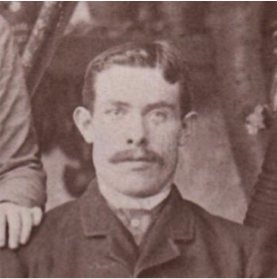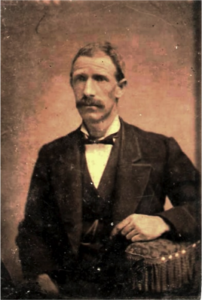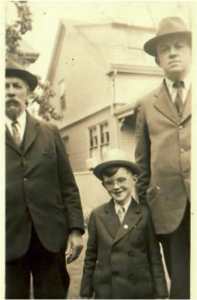 Three generations, 1937: Patrick Dwyer, grandson Francis Dwyer (my father), son Michael F. Dwyer. My grandmother captioned this one “Father, Son, and Holy Ghost.”
Three generations, 1937: Patrick Dwyer, grandson Francis Dwyer (my father), son Michael F. Dwyer. My grandmother captioned this one “Father, Son, and Holy Ghost.”
My father’s Irish-born grandfathers, Patrick Dwyer of Newport, Rhode Island, and Patrick Cassidy of Fall River, Massachusetts, had much in common besides their first names. They left behind parents, emigrated in their early twenties, arrived in New York within a year of one another, quickly became United States citizens, joined fraternal organizations, and purchased homes. Their exact birthdates are approximated because although baptismal records have been found for other siblings, records for the two Patricks fall in the gaps of Catholic registers. And in another coincidence, they were married by brother Roman Catholic priests, Thomas and Philip Grace.[1]
Paternal grandfather Patrick Martin [middle name added later] Dwyer (ca. 1862–1945), a native of Dreenauliff, County Kerry, had a lifetime job as a blacksmith with the New England Steamship Company in Newport. Past 80, he died from injuries sustained from crossing a busy street without looking. By contrast, maternal grandfather Patrick Cassidy (ca. 1862–1891), a native of Cloonierin, County Mayo, dead at 29, supports the chilling statistic that about one-fifth of Irishmen died in their prime, usually from work-related accidents. Family lore claims he was killed from machinery hitting him in the chest. Patrick’s death certificate lists heart disease as the cause. A death notice in the Fall River Globe for 12 October 1891 stated he was a prominent member of the Ancient Order of Hibernians and died at his home “after a short illness.” Birth of a posthumous daughter seven months after Patrick’s death underscored this family’s tragedy.
“What are you going to find out? They were poor people who came over here for a better life. End of story.”
Knowledge of my Irish forebears did not come as a birthright. My father, Francis M. Dwyer (1931–2015), expressed little interest in learning about his ancestors. In fact, he scorned my research efforts, especially if they involved spending money. Dad would say, “What are you going to find out? They were poor people who came over here for a better life. End of story.” As I came to discover, my father’s attitude was not uncommon among first and second generation Irish-Americans. Perhaps the published scholarship and ensuing dialogue that took place as Ireland remembered the 150th anniversary of the Famine brought about a seed change. Here and in Ireland, one sees exponential curiosity about Ireland, aided by digitization of Irish records.
Looking at the bigger picture of the Irish diaspora that started with flight from famine and disease in the 1840s, my research has built up a more complex and interconnected saga as to how Dad’s grandfathers fit in this context. They were part of a middle chapter of immigration that began a generation earlier. Neither man lived among strangers. Both Patricks had uncles who paved the way for their nephews to settle in their respective communities. Fortunately, I began searching for my Irish roots during college, over forty years ago, when there were living relatives who could help construct pieces of the puzzle.
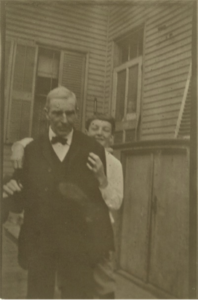 John F. Mahoney, grandson Edward Corcoran, and daughter Annie Corcoran in doorway of their home on Newport’s Long Wharf, ca. 1902
John F. Mahoney, grandson Edward Corcoran, and daughter Annie Corcoran in doorway of their home on Newport’s Long Wharf, ca. 1902
“Captain” John Florence Mahoney (1830–1922) was Patrick’s Dwyer maternal uncle. In 1851, he joined Mahoney relatives already established in Newport. Notwithstanding Civil War years spent in Negaunee, Michigan, Mahoney earned the distinction as the oldest living member of St. Mary’s Catholic Church in Newport. Patrick Dwyer served as a pallbearer at Mahoney’s funeral.[2] John’s grandson, Edward Corcoran (1893–1997) corresponded with me and shared reminiscences about Patrick Dwyer. Whatever doubt Mr. Corcoran expressed about the degree of family relationships between the Mahoney and Dwyer families has been erased through DNA evidence.
Patrick Hart (1842–1915) was Patrick Cassidy’s maternal uncle. His migration path from the townland of Sraheens in County Mayo to Fall River was circuitous: Smithfield, Rhode Island, in 1859; West Riding, Yorkshire, during the Civil War; Lowell, Massachusetts, in 1870, then shortly thereafter, his last move to Fall River’s Globe section, where he lived for the remainder of his life. His only son, Rev. Patrick Hart, became a Catholic priest, ordained for the Diocese of Brooklyn.[3] Father Hart’s return visits to Fall River were well-remembered, especially by my father, who acted as his chauffeur. Vague recollections of relationships among the Hart and Cassidy families have now sharpened through DNA samples from descendants.
As my title suggests, this middle chapter of my Irish families’ immigration presages a more voluminous one that lasted through the first quarter of the twentieth century as each relative extended a hand across the sea to bring over the next family member. Rarely is the life of an immigrant the story of a single individual.
Notes
[1] They served the Diocese of Providence, Rhode Island, which included Fall River, Massachusetts, until 1904, when the Diocese of Fall River was established.
[2] For more details, see Michael F. Dwyer, “From Cahirdaniel to Newport: A Study of Three O’Mahony Families,” Rhode Island Roots 35 [2009]: 57–80.
[3] Michael F. Dwyer, “Hart-Cassidy Migration from the Parish of Kilmovee, County Mayo, to Fall River, Massachusetts,” The New England Historical and Genealogical Register 165 [2011]: 85–99.
Share this:
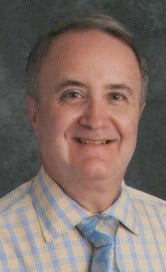
About Michael Dwyer
Michael F. Dwyer first joined NEHGS on a student membership. A Fellow of the American Society of Genealogists, he writes a bimonthly column on Lost Names in Vermont—French Canadian names that have been changed. His articles have been published in the Register, American Ancestors, The American Genealogist, The Maine Genealogist, and Rhode Island Roots, among others. The Vermont Department of Education's 2004 Teacher of the Year, Michael retired in June 2018 after 35 years of teaching subjects he loves—English and history.View all posts by Michael Dwyer →
